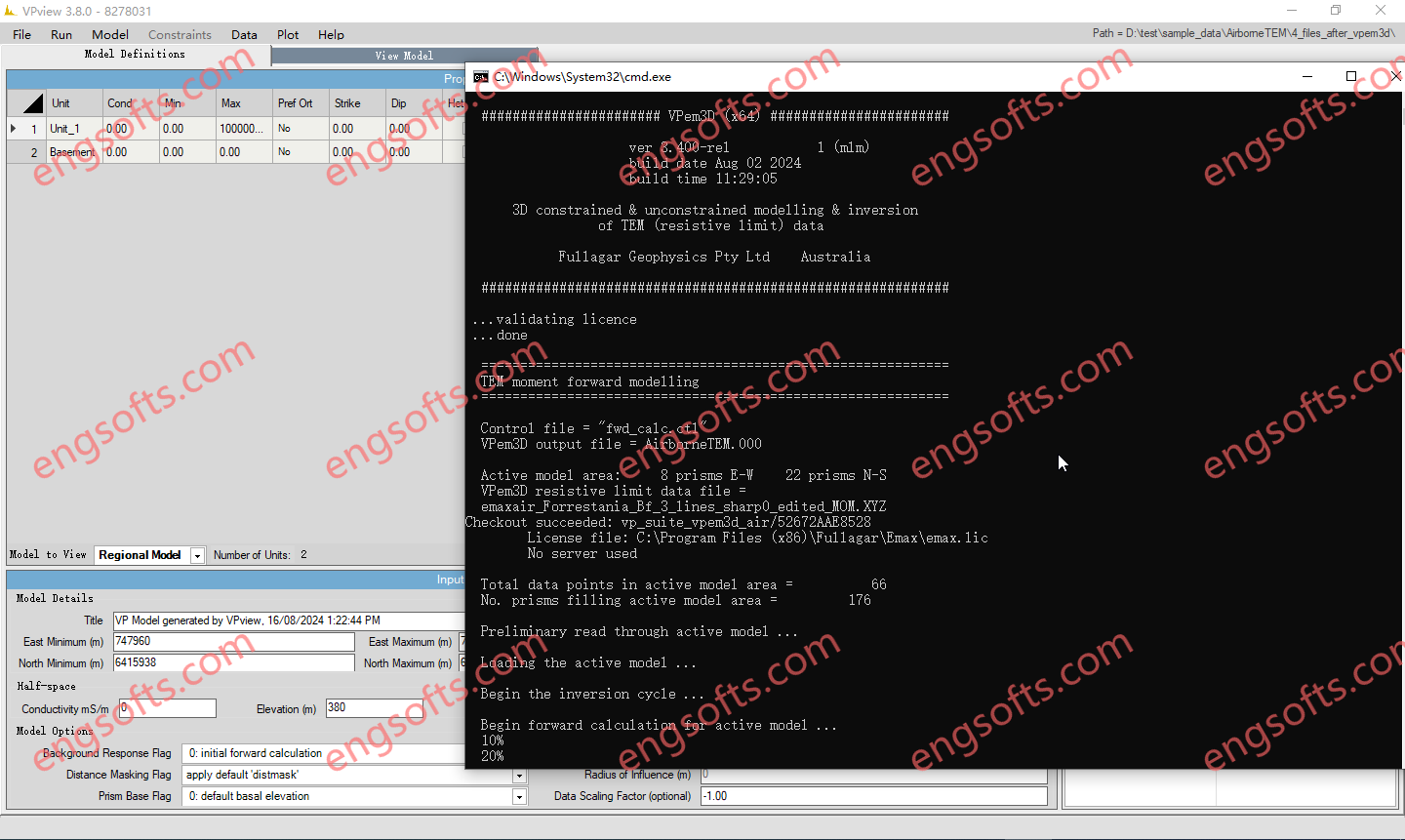VPem3D performs fast approximate 3D inversion (both “unconstrained” and geologically-constrained) of airborne, ground, and downhole transient electromagnetic (TEM) data. Decays are converted to TEM moments in order to achieve run times 10 times faster than conventional 3D TEM programs. VPem3D uses the same model formats and inversion styles as the VPem1D 1D TEM inversion software and the VPmg gravity & magnetic software.It include VPview v3.8.0.
Fullagar Geophysics VPem3D 3.400 Tested Picture
New conductive host (half-space) options
- When including a conductive host (half-space) ground or downhole TEM response, the user can now elect to compute either “complete” (all-time) or “incomplete” (finite time range) moments in almost all cases. VPem3D reads the integration limits for incomplete moments, if required, from the moment data (XYZ) file header.
- Complete moments are quicker to calculate, but can be somewhat misleading if the moments computed from the data relate to a short time range,especially for stations close to the transmitter. Complete half-space moments are undefined for horizontal components from a grounded source, so only incomplete half-space moments are available in that case.
- Incomplete moments involve more computation, sometimes increasing run times noticeably if the half-space conductivity is optimised for a large data set.An option has been included to enable the user to reduce run times by decimating the data, i.e. computing the host response at every nth station.This can be an effective strategy with minimal “down-side”, especially at early iterations. Later in the inversion, the host conductivity usually changes little,hence can be kept fixed with minimal “down-side”. An extra parameter has been added to the 8th line of the model file header to control the expanded half-space options.
- Analytic formulae have been derived for “incomplete” (finite time) moments for a grounded dipole SAM on a half-space. Both galvanic and induced currents are taken into account. Implementation of these formulae in VPem3D now permits estimation of the conductive host contribution in grounded dipole SAM data.
Calculation of empirical standard deviations from repeat readings
When calculating TEM moments from downhole or ground TEM data,empirical standard deviations (SDs) can now be computed from repeat readings by TEM2Mom. This is an alternative to assignment of “parametric”SDs using a relative error (PCERR) and a noise floor (SDMIN).
Rotation of ground TEM horizontal components
TEM2Mom has been modified to rotate ground TEM horizontal components, as well as to transform data locations, when VPem3D operates in a rotated local coordinate system. The new code can handle cases where the measured ground TEM components are oriented at an arbitrary angle with respect to the survey lines.
Reversal of TEM moment polarity
Polarity of TEM moment components can now be reversed by adding “-“ to the label in the PAR file. For example, if the PAR file includes a record 4 -RLY
the “north moment” (RLY) values in column 4 of the data file will be multiplied by -1 in VPem3D. This eliminates the need to edit moment data files simply to reverse component polarity.


 ID:softmed
ID:softmed ID:956575828
ID:956575828
Must log in before commenting!
Sign Up